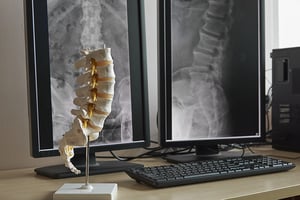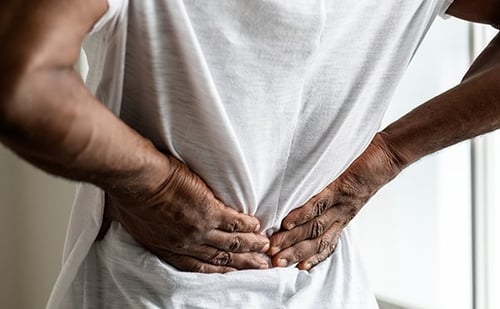Sacral (S1-S5) Spinal Cord Injuries
Injuries to the sacral spine are less common than injuries to other areas of the spine. It is also the least likely area for spinal nerves to compress.

Injuries to the sacral spine are less common than injuries to other areas of the spine. It is also the least likely area for spinal nerves to compress.
The sacrum is the triangle-shaped bone at the end of the spine between the lumbar spine and the tailbone. The sacral spine consists of five segments, S1 - S5, that together affect nerve communication to the lower portion of the body.
It is important to understand that the spinal cord does not extend beyond the lumbar spine. L2 is the lowest vertebral segment that contains spinal cord. After that point, nerve roots exit each of the remaining vertebral levels beyond the spinal cord.
Damage to the spine at the sacrum levels affects the nerve roots as follows:
Damage to the sacral spine is less common than other forms of spinal cord injuries. The sacral spine is also the least likely area for spinal nerves to become compressed. Some incomplete spinal injuries to this level are referred to
as sacral sparing, as the motor function pathways are spared in the injury.
*Learn more about Sacral Sparing.


While there is no spinal cord in the sacral spine region, the sacral nerves actually originate in the lumbar spine. Damage done to the nerve roots in the lower lumbar spine and into the sacrum may have similar symptoms as spinal cord damage.
Patients with sacral nerve injuries may have symptoms on one or both sides of the body. Injuries to the sacral spine may leave the patient with some degree of function loss in the hips and/or legs. The patient will most likely be able to walk, and drive a car. An injury to the sacral spinal cord may leave the patient with little or no bladder or bowel control, however, the patient will be completely autonomous and have the ability to perform their own self-care.
The sacral region is home to the control center for pelvic organs such as the bladder, bowel, and sex organs. Sexual function is a concern, especially in men who experience sacral spinal nerve injuries. Men’s fertility may be affected with lumbar and/or sacral nerve injuries while a woman’s fertility is typically not affected.

Patients with injuries to the sacral nerve roots may experience:
The most common causes of spinal cord injuries to the sacrum are:
Current treatments available for spinal cord patients with sacrum injuries are:
Damaging either the S1, S2, S3, S4, or S5 vertebrae should leave the patient fairly functional with some issues controlling bowel and bladder function. Patients with injuries to the sacrum typically live very normal lives. Some assistance may be needed for these patients, but most do well on their own.
Spinal cord injuries are traumatic for patients and their families. They cause disruptive changes to every aspect of your life and there is a lot of new information to navigate and understand. Our experts have collected everything in one place to help you learn more about your injury, locate doctors and treatment centers, find financial support, and get assistance navigating your next move.
Sponsored by Tampa personal injury lawyers at Swope, Rodante P.A. a Florida law firm located at 1234 E 5th Ave, Tampa, FL 33605.
The information provided by SpinalCord.com is not a substitute for professional medical advice, diagnosis, or treatment, see Disclaimer Policy.